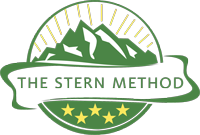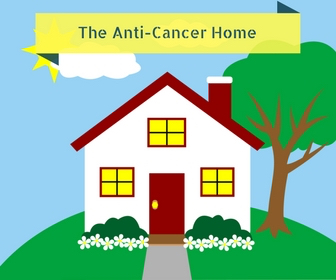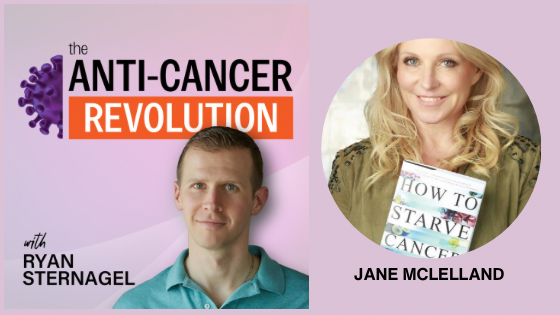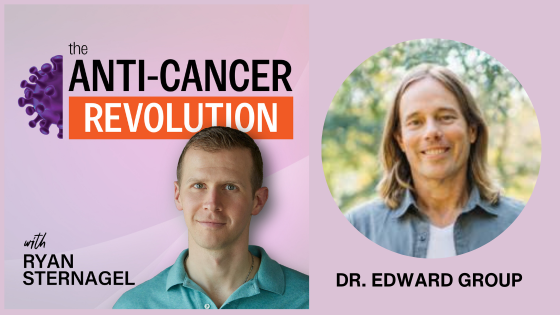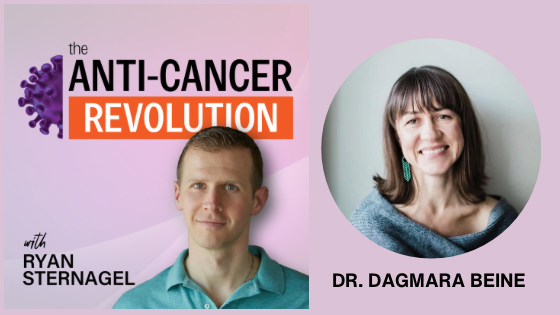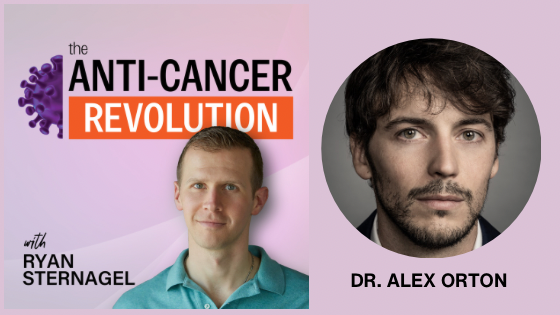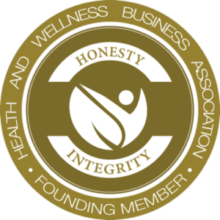[sc name=”SquareOne”]
The Stern Method Podcast Episode 9
Dr. Nasha Winters is here to put the notion that cancer more of mitochondrial origin than genetic into the bigger picture. Now that we understand cancer as a metabolic disease, what do we do about it? Her book The Metabolic Approach to Cancer addresses top strategies for mitochondrial health and healing along with ways to figure out what specific area is best for you individually to address first.
In This Episode:
- Dr. Nasha Winters’ comprehensive healing plan, The Terrain Ten, crafted around the understanding of cancer as a metabolic disease.
- Top agents that cause harm the mitochondria in the first place along with the top mitochondrial health boosting measures to take.
- Plant based diet versus mostly plant based diet for mitochondrial health.
- The science of everything that’s happening in the body in fasting and ketosis above and beyond glucose restriction.
- Oxygenation and oxidation as they pertain to cancer, where antioxidants fit into that equation, and how to look at all three of them when attempting to formulate an overall protocol.
- Epigenetics and how we’re beginning to be able to use individual epigenetic information to customize what compounds and therapies to use and the way we implement all of them down to the individual person knowing and compensating for how they will react ahead of time.
- Dr. Nasha’s view on the Gerson therapy and the high amount of natural food sugars involved in light of what tends to be the recommendation in the metabolic discussion of keeping blood sugar low.
- Dr. Nasha’s favorite immune boosting and detoxification measures.
[sc name=”Simple Mailing list opt in”]
How the Metabolic Approach to Cancer Applies to Childhood Cancer
As we wrote about in the recap of Professor Thomas Seyfried’s interview on Cancer as a Metabolic Disease, the metabolic view of cancer holds true across childhood cancer right along with adult cancer. This gives parents a very meaningful target to set our sights on that transcends the feeling that our kids’ cancer is “different” than that of adults and the information we hear about might not apply to our situation.
Backing this up in real world application is the MaxLove Project. This organization has been teaching parents about the metabolic approach to childhood cancer and utilizing ketosis in kids for years and seeing incredible results.
Ketosis can serve as a very powerful protection to healthy cells during conventional treatment.
Although in childhood cancer the choice doesn’t even exist in most situations whether or not to employ conventional treatments, we need to be looking at as many integrative, protective measures as we can.
A few items that are mentioned below as ways to protect and stimulate the mitochondria you might pass by if you think your child is too young, but I would encourage you to just get a little creative. We’ve been able to apply most of these with Ryder, and some of these concepts are actually the most fun for him and for us!
Specifically:
- Avoiding Negative Thoughts:
- You might think at first, how can I control my child’s thoughts? While you may not be able to control each individual thought that goes through their mind, you are the greatest influencer on the overall theme.
- How you react to the various situations you’re presented with in this journey will directly influence how your child perceives them and therefore their overall mindset.
- We are always very conscious about keeping the tone of any conversation as upbeat as possible when Ryder’s around for this very reason.
- Even a child that doesn’t speak yet (Ryder when we started) can still pick up a general aura from their parents.
- Avoiding Long Periods of Inactivity:
- Ideally, your kid is up and about, running, crawling, and/or climbing around and being a kid in general as much as possible through all of this.
- If they’re too young to walk or crawl, or feeling too bad to be moving around much, just gently helping them move and roll around regularly on the bed or floor can go a very long ways. This is both for mitochondrial support and keeping the lymphatic system moving which is crucial as well.
- High Intensity Interval Training:
- Start doing this for yourself first and I guarantee the ideas will start flowing of what you can apply to your kid.
- Ryder loves hard bursts on his trampoline (which again, is huge for lymphatic support along with all movement).
- Most days we go through a full-blown workout routine including jumping jacks, jumps, burpies, push-ups, sit-ups, and so on.
- Intermittent Fasting:
- This might be another one you’d be a bit hesitant about at first, but the idea behind intermittent fasting is not necessarily about eating any less calories, it’s just about eating them less often / in a smaller window of time.
- We’re not religious about it with Ryder but more often than not, he usually does not end up starting eating until at least 10am and sometimes even later, and we try to have him finished eating at least an hour before he goes to bed. As with everything else, it wasn’t an overnight transition. We just started pushing the time out little by little.
- Cold Exposure:
- Think your kid is too fragile for a cold shower or cold plunge? Think again!! Quite the opposite in fact, kids have not had years and years of training that the cold is something to be disdained and avoided.
- It might take a little getting used to, but you could be surprised at how much fun your kid can have with a hot / cold (contrast) shower. We made this video when we first started doing them with Ryder and he wasn’t quite sure about them (clearly), but now we really need to make an update video as after a bit of work he now demands it every time he’s in the bath!
Another concept that holds true across childhood cancer are the ten hallmarks of cancer that Dr. Winters notes below are the ten hallmarks of cancer. Again, this can serve to give you a way to look at cancer in more manageable chunks to research and address in other words, to combat the feeling that the cancer must be so unknown that you just don’t know where to start.
Between the metabolic aspect, the ten hallmarks of cancer, and Dr. Nasha Winters’ Terrain Ten which you’ll learn about below and in her book, you’re armed with actionable places to start that will have a very positive impact once you start addressing them one by one, no matter what type of childhood cancer you may be dealing with.
[sc name=”GMOs Revealed”]
The Metabolic Approach to Cancer
Dr. Nasha Winters’ book, The Metabolic Approach to Cancer, best I can tell, is the first book on healing cancer written through the lens of the metabolic theory of cancer by a clinician, rather than a scientist.
This is important because at the end of the day a doctor, especially a naturopathic oncologist, is the person that is responsible for taking data and transforming it into an action plan that has in their view the best chance at healing their patients.
Currently, most of the articles and books you’ll see on the metabolic aspect on cancer focus solely on the ketogenic diet and oxygen therapies when it comes to what to actually do with the information to turn cancer around.
While these two approaches are certainly showing promising results, they are by no means the only areas that need to be addressed, not by a long shot.
Even if cancer does indeed originate in the mitochondria, you’ve still got to detoxify, you’ve still got to reduce inflammation, and you’ve still got to take in a whole lot of anticancer compounds to positively influence epigenetic responses and so on.
As Nasha puts it, ultimately our health and response to treatment are dependent on how the mitochondria are behaving. That being said, she still views cellular metabolism as one “funnel” of many to address and zooms back out and looks at the big picture to make sure she’s treating and healing the whole body.
She’s got ten of these funnels in fact.
Which is why her system for addressing them is called The Terrain Ten. I presume the name was inspired by Antoine Bechamp’s “law of the terrain,” often quoted by our friend Robert Scott Bell. This states that the overall state of the body, “the terrain,” alone either allows for or prevents disease. Everything else, even the primary drivers of cancer we always hear about such as microbial infection, negative epigenetic expression, and even poor mitochondrial function are all just the end results of a poor terrain.
In regard to cancer, Dr. Nasha breaks out The Terrain Ten as follows:
- Genetic, epigenetic, and nutrigenomic modifications
- Blood sugar balance
- Toxic burden management
- Repopulating and balancing the microbiome
- Immune system maximization
- Managing inflammation and oxidative stress
- Enhancing blood circulation while inhibiting angiogenesis and metastasis
- Establishing hormone balance
- Recalibrating stress levels and biorhythms
- Enhancing mental and emotional well-being
It’s a very good list. All of which as she points out in the book is interconnected, and all ultimately viewed through the metabolic lens. And with over 300 scientific medical references in the book, she’s got a lot of hard research to let you know what to do about each category.
Nasha and I spent so much time laying a foundation on mitochondria and clearing up some terms and strategies as they pertain to the metabolic approach (all of which are summarized below) that we were only able to get to a few of the ten elements of the terrain.
We agreed that a part two interview was definitely needed but in the meantime, PLEASE do yourself a huge favor and get the book!!!
Top Mitochondrial Health Measures
Dr. Winters makes the point that even when talking about the mitochondria specifically, the things you want to steer clear of in protecting them are really the same things you know are bad for you for a thousand other reasons if you’ve been researching health for any amount of time:
Avoid These to Protect Your Mitochondria
- Negative thoughts resulting in undesirable epigenetic expression.
- Unnatural and synthetic hormones found in plastics and conventionally raised food.
- Toxic load: synthetic chemicals found in cleaning and personal care products, tap water, processed and/or non-organic food, and so on.
- Antibiotics: Both prescribed by doctors and found in conventionally raised animals.
- Blue light (regular light bulb) exposure after sunset and before sunrise.
- This one may be new to you. Expect a forthcoming article and/or interview explaining this in great detail but for now… it’s really bad for your mitochondria. Nasha referred to it as the “new cigarette smoking.” You can find the red light bulbs and blue blocking glasses we use for these purposes in the Anti-Cancer Life section of the What We Use tab at the top of The Stern Method.
- Long periods of inactivity (such as sitting all day): We didn’t cover this one in the interview but I know Nasha would approve. This is another practice referred to as the “new cigarette smoking.” As the mitochondria’s primary function is creating energy, this is your classic “use it or lose it” type of situation.
The other side of the mitochondrial health coin is what you can do to actually improve both mitochondrial function and mitochondrial biogenesis (the growth of new, healthy mitochondria). Moderate “stressors” that ramp up the need for energy production in your body will get your mitochondria whipped into shape in no time! The best part is that each one Nasha listed off is free!
Do These to Improve Number and Function of Your Mitochondria
- Cold Exposure: Cold showers, contrast showers (alternating hot and cold), cold plunges, chryotherapy, learning to sleep with no blankets, etc.
- Sweating: Far or near (or dual) infrared sauna.
- High Intensity Interval Training (HIIT): Exercise designed around all-out bursts of activity with short rest periods in- between.
- Intermittent Fasting: Limiting the time window that you eat during the day. In addition to giving your body increased rest and repair time (as opposed to digestion), this also ramps up your body’s need to produce its own energy via ketones produced from your own body fat.
Plant Based vs. Omnivore (Largely Plant Based) Diet
Somehow, the topic of vegan vs. omnivore came up (which it usually does when talking about cancer) so we went ahead and dove into that for a few minutes. Nasha pointed out that first and foremost, while she does believe that we do need a little bit of animal in our lives, by far the food that she says we need the most of is indeed plants.
Nasha made the point though that in her clinical practice, she consistently saw worse bloodwork in vegans, and vegan athletes in particular, than in omnivores. Issues such as high oxidation, high cortisol, HPA axis issues, hormone disruption, and glycemic issues. She also noted in her own journey back to health from a cancer diagnosis of her own, her blood work is much better today after having incorporated a bit of animal protein back into her diet than when she was purely plant based.
Dr. Winters did note that possibly even more important than any potential inherent deficiencies in a purely plant based diet is what many of the people on a restrictive diet such as that end up falling back on to fill up with, namely grains.
Too much of anything can be a problem, and too much of the lectins in grain can end up creating a permeable gut or exacerbating an existing one. And if someone has been through conventional treatment you can pretty much assume there is already a problem there to make worse.
Lastly, she explained that it’s not necessarily the fundamental nature of the food that’s bad, it’s what has happened to it in modern times. Even if you’re eating organic food, with how saturated the earth is in glyphosate, it’s pretty safe to assume you’re getting a little bit no matter what.
Nasha noted her experience has shown that grains, even organic ones, tend to have the highest levels of glyphosate out of any plant. Time and time again, the only change she’s made to start with a client is to take them off of grains and she watches the glyphosate levels go down dramatically.
Right along these lines, “this ain’t Jesus’ wheat.” Apparently Nasha liked a line of mine she got last time we met 😉
Wheat in its true form is all well and good, but it in today’s modern world it has been hybridized into something largely unrecognizable to our bodies.
Gluten in naturally occurring levels we can handle. Gluten in amounts several times higher than what it’s supposed to be in modern wheat we can’t. And this isn’t even mentioning the glyphosate issue and more recently the outright genetic modification of wheat… which is a whole other story in itself.
Suffice it to say that no matter what diet you follow, in today’s world you have to be very conscious deliberate in your choices to ensure you’re taking in much more good than you are bad.
Ketosis Is about Much More Than Fat
I was glad to hear Nasha talked about the state of ketosis much more in terms of fasting than taking in huge quantities of fat. The ketogenic diet is essentially designed to mimic the beneficial effects of fasting, and one should continue to fast, especially intermittently while utilizing this approach.
Dr. Winters points out that being in a state of ketosis, especially fasting induced, has not only been shown to be beneficial in many measurable health effects, but that it is inherent to our humanity. It’s only been very recently in human history that we’ve had access to continuous food anywhere any time.
Before grocery stores and refrigerators going long periods of time without food was just what humans did. When we didn’t have anything available we just ran off of the energy stored in our own body, our fat.
Whether you believe in God or not, it makes a lot of sense that we would either have been designed or have evolved to possess this capability.
We should be able to go 16-18 hours without food without it being a big deal. If we can’t, this is a clue that something is wrong.
Perhaps since it is a state we are “supposed“ to be able to move in and out of this would go at least some of the way in explaining some of the positive, anticancer health effects of fasting and ketosis.
Nasha states that if you can fast for three days, you have basically rebuilt your immune system. This is part of the reason this has been a common prescription in traditional naturopathy for hundreds of years.
Autophagy is the act of your cells basically taking a break from energy production to clean themselves up. In this state they identify damaged proteins and organelles (such as bad mitochondria!!!) and break them down for recycling.
A metaphor I like is to think of each cell as its own little commercial kitchen cooking up cellular energy. After the kitchen staff gets done cooking for the day or week they’ll put time into cleaning up the grease, smoke residue and food stains so they don’t accumulate into something that would be much harder to clean.
That cellular cleaning is autophagy. If we never go into autophagy then all of the waste byproducts of the cellular energy production get left to build up day after month after year. Autophagy is primarily triggered by fasting and long periods of time without eating.
Dr. Winters brought up a study on a group of breast cancer survivors that was looking at the difference between intermittent fasting and eating more traditionally which these days seems to mean first thing in the morning to shortly before bed. The study found that the women that fasted only 13 hours per day had a 70% lower chance of the cancer returning.
This is not a terribly long time to fast by the way. A schedule that involved not eating for 13 hours would look something like breakfast at 8:00am and dinner at 7:00 pm.
Ketosis Addresses Many Aspects of Cancer
Nasha brings our attention to the ten hallmarks of cancer published in a well-respected medical journal by well-respected researchers that everyone even in the conventional oncology world has come to agree on.
These are:
- Self-sufficiency in growth signals (the accelerator pedal is stuck on)
- Insensitivity to anti-growth signals (the brakes don’t work)
- Evading apoptosis (they don’t die when they’re supposed to)
- Limitless replicative potential (infinite generations of descendants)
- Sustained angiogenesis (telling the body to give the cancer its own blood supply)
- Tissue invasion and metastasis ( migrating and spreading to other organs and tissues)
- Deregulated metabolism (fermentation instead of normal respiration of oxygen)
- Evading the immune system (cells disguising themselves as healthy cells)
- Genome instability (more and more genetic mutations as the disease progresses)
- Inflammation (swollen tissues and cells)
Why is this important to know? Because conventional oncology usually goes after one or two of these hallmarks at a time. Nasha states that ketosis has now been proven to address SIX of these hallmarks and they have a strong start at proving the other four.
Ketosis and Fasting Both Synergize with and Protect against Chemotherapy
Two researchers were brought up that have been doing a lot of research in the area of fasting and ketosis combined with the standard of care and coming up with incredible results.
Adrienne Scheck, Ph.D. has been documenting ketosis’ synergy with chemotherapy. Far more cancer cells are killed during conventional treatment in a state of ketosis than not.
Valter Longo, Ph.D. has also shown in his studies fasting and ketosis to be enormously protective to healthy cells during chemotherapy. As a group, his patients who fast report less weight loss (ironic, right?) and less of basically every other unpleasant side effect.
Time and time again fasting is shown to keep healthy cells healthy and push chemotherapy into the unhealthy ones.
Nasha notes that most going undergoing chemotherapy will usually be put on a steroid and feel good until it wears off. Patients utilizing fasting don’t even need the steroid in the first place, which is good because steroids impact blood sugar themselves, among other things.
A hypothetical example that Longo has been finding to work on fasting and chemo (not medical advice) is as follows. If a patient were scheduled for chemotherapy on a Tuesday morning, Longo would have them eat their last meal on Sunday evening and not eat again through the chemotherapy until Thursday morning.
Oxygen Based Therapies Augment Fasting and Ketosis
Dr. Winters points out clinicians are finding that ketosis kills a certain number of cancer cells on its own, and oxygen based therapies such as high dose vitamin C, hyperbaric oxygen and ozone kill a certain number of cancer cells on their own, but the combination of the two have a multiplicative effect in which they’re killing far more than they would have on their own.
The interesting thing about many cancer therapies is that they need to cause oxidation and inflammation to kill cancer cells. This is the way chemotherapy works. Chemotherapy, on that note, does not discriminate between heathy and cancer cells. It blasts away everything, with the hope that the cancer dies before the patient does.
The more natural oxygen based therapies mentioned above have a much more targeted effect.
Healthy cells have enzymes that are able to handle the more natural form of reactive oxygen species produced by these types of therapies, whereas cancer cells do not. Cancer cells are also more rigid than healthy cells giving anticancer agents a more difficult time getting in and also making it more difficult for the immune system to identify and address them. These oxygen based therapies go a long ways in reversing both of these problems.
The Difference between Oxidation and Oxygenation
On this note, I asked Nasha if she could explain for us the difference between oxygenation (healthy cells need oxygen to live, etc.) and oxidation (the harmful effect oxygen can have on unhealthy and healthy cells alike, reactive oxygen species or free radicals, etc.), as you often hear oxygen being spoken about as a good thing and a bad thing seemingly in the same sentence and sometimes it’s hard to keep it straight.
She noted that the two terms do exist in a bit of a parallel universe, that you can’t have one without the other and that multiple reactions are happening simultaneously. The big thing to note is that the mitochondria and metabolism of healthy cells act very differently from that of cancer cells.
She took vitamin C for an example. In low doses in healthy cells, it can act as an antioxidant, build healthy oxygenation of cells, and act as a redox agent (communication / balance between oxidants and antioxidants all at the same time).
In high doses, vitamin C switches gears and turns into a pure pro-oxidant. If you were doing absolutely nothing at all to support your healthy cells, Nasha notes that high dose vitamin C actually could do a bit of damage to them as well. But when the body is being supported properly the normal cells have the capability to properly process and absorb the oxygen whereas cancer cells do not.
So again, since cancer cells are not able to utilize oxygen and produce their energy via fermentation, oxygen behaves differently when it comes in contact with anaerobic (without oxygen) metabolism of a cancer cell vs. the aerobic (with oxygen) metabolism of a healthy cell.
Interestingly, Nasha also pointed out that a lifestyle factor that tend to promote increased longevity is living at higher elevations. Since there is less oxygen in the air, the body is constantly pushing itself to produce more red blood cells and more mitochondria, and become more effective at binding oxygen. This is the same reason why Olympic athletes will train at high elevations to give themselves that extra edge for the competition.
Nasha noted that there is the damaging form of oxidation happening in us all the time but we can slow it down by taking care of our healthy cells. She herself is much healthier now that she has really been conscious about this and takes steps to avoid oxidation such as:
- Deep breathing
- Superior hydration
- High quality fats
- Hot and cold exposure
- Moving (not too much like excessive marathon training but certainly not too little)
Nasha noted that all of these measures are supportive of healthy cells and harmful to cancer cells.
Timing of Pro-Oxidants and Antioxidants
With all of this in mind I asked Dr. Winters about any considerations we need to take when implementing pro-oxidant measures versus antioxidant support so that the two do not cancel each other out.
She described it as a bit of an elegant dance and that yes, you would not want to be doing both the oxidative / cytotoxic measures at the same time as the antioxidant / metabolic measures. One could implement special days of the week for each category, or even large blocks of time in a single day for each would suffice.
Immune boosting supplements and therapies can be running concurrently through both of these.
Two leaders Nasha mentioned in the mechanics of getting the science and optimal implementation behind all of this worked out are Dr. Paul Anderson (who happens to be Ryder’s first naturopathic oncologist / look out for an incredible upcoming interview with him here!) and Dr. Sean Devlin.
Like I said… we covered a lot before we even got to Nasha’s Terrain Ten and agreed there would certainly need to be a part two to attempt to cover the rest. Here is what we did have time to touch on however:
Terrain Ten – Genetic, Epigenetic, and Nutrigenomic Modifications
“Just because this is the blueprint you were born with doesn’t mean you can’t rearrange the furniture.” –Dr. Nasha Winters
There is a very fluid interplay between hard coded genetics and adaptable epigenetic effects. Dr. Nasha noted (as Travis Christofferson did in our last interview) that even though two identical twins can be born with the exact same genetic blueprint, their disease processes or lack thereof can differ dramatically due entirely to how each of them have gone about “rearranging their furniture” (what their diet and lifestyle look like and the resulting effects on their epigenome).
There is also the concept of epigenetic inheritance. This is different than the genes themselves that one does or does not inherit from their parents, it has more to do with the settings in which they inherited them. Our parents’ diet and lifestyle will effect what genes are turned up and down, on and off, and they pass them on accordingly. To the best of our current knowledge, this effect can span at least four generations.
This is of particular interest to those of us in the childhood cancer community as it provides much greater hope that whatever our children might be born with doesn’t necessarily need to be a permanent thing.
A person’s genome and epigenetic settings can also tell us a whole lot about disease patterns, expected drug and nutrient reactions and how to prepare for them, and explain odd reactions you wouldn’t expect. A few examples of these Nasha noted:
- People having a hard time with B12 confounded practitioners for a long time until methylation issues were discovered
- More and more actionable information is coming out on whether a particular chemotherapy will work for an individual person or not, and what sort of dose would be optimal
- Individuals with ACAT SNPs (single nucleotide polymorphisms) will need additional support such as enzymes and ox bile to be able to handle a high fat diet
- Those with CYP2D6 SNPs will have a hard time metabolizing many drugs
- The activity of the CYP1A2 gene can determine if coffee is good or bad for you!!
Terrain Ten – Blood Sugar Balance
The metabolic approach to cancer says you want to watch your blood sugar closely and limit foods high in sugars (even natural ones) and carbs. This touches on one of the fundamental disagreements in the natural health world right now which can be roughly summed up as the keto crowd versus the Gerson crowd.
With this in mind, I wanted to know Nasha reconciled the low carb philosophy with the success folks such as Chris Wark had reversing his cancer with a high-starch diet or as Ryan Luelf did with a high-fruit diet. Fairly enough, Nasha noted that you really can’t comment on someone’s long term health without having their labs and bloodwork in front of you. I know that both of those gentlemen in particular are both pretty big on getting their bloodwork checked out. It would be very interesting to say the least to be able to get both sides in the same discussion at once (and that is exactly what we have planned for future interviews… so stay tuned!!).
I also wanted to know how she reconciled the time tested success of the Gerson therapy whose centerpiece is carrot juice and apple juice. This concoction is loaded with fruit sugars and has all of the fiber removed to boot so you’re certainly getting a massive blast. She had a couple very interesting points here:
- When the original Dr. Gerson created his protocol and had so much success, the world was a much less toxic place. Cancers for the most part were simpler with less mutations and less driving forces than they are as in the perfect storm we live in today. So what might have worked back then wouldn’t necessarily work today.
- Interestingly, Dr. Patrick Vickers of the Northern Baja Gerson Center made the same point in the interview we’ll be putting out next week and this was his reasoning for adding additional therapies onto the original protocol.
- BOMBSHELL: Dr. Winters said that she’s studied Gerson extensively as well and that the original recipes he was using were more green centered than carrot. It’s been flipped over the years to favor carrots and apples as our tastes have changed. This certainly would be quite the revelation… I’ve gone back and asked her if she has anything we can look at for further information on this and she’ll be getting back to us soon with it. Stay tuned for updates!
Terrain Ten – Toxic burden management
Here Nasha listed out a few indicators and tests that can tell a lot in terms of what we might be dealing with in terms of chemicals, heavy metals, and infection to give us a better idea of exactly what we need to be focusing on:
- Chronically low white blood cells (if not induced by conventional treatment) indicates a low functioning immune system which would point to infection or heavy metal burden
- In other words, clear up infections and heavy metal burdens to get the immune system back online!!
Low platelet count (again aside from what might result from conventional treatment) will usually be indicative of an infection - CBC and CMP tests are both inexpensive and can yield a lot of great information
Higher end tests such as Genova and Great Plains will test specific heavy metals and chemicals such as glyphosate
Infrared saunas along with hydrotherapy and all means of stimulating the lymphatic system are very high up on Nasha’s list of most effective detox measures!!
Terrain Ten – Immune System Maximization
Some of Dr. Winters’ top immune boosting measures are:
- Mistletoe injections. Nasha is an expert in mistletoe and advocates for its use as one of the most powerful ways to both stimulate immune activity and help the immune system identify or “unmask” cancer cells.
- Mushroom Extracts
- Removing toxic burden (see above)
- Managing stress… I loved her examples of how to do this which included:
- Calming the monkey mind
- Dancing it out
- Puppies
How to Use the Terrain Ten to Individualize Your Healing Approach
Again, due to time we had to cut it short at those elements of Dr. Nasha’s Terrain Ten… which is just fine because this article is getting very long!! But not to worry because all those we didn’t cover along with a much deeper dive into each we did, as well as more explanation on how to view all of it in the light of cellular metabolism and the mitochondria can be found in her book The Metabolic Approach to Cancer.
What I love most about the book is that each element of the Terrain Ten has its own questionnaire. Fill out all of the questionnaires to see which areas you need the most work on right away and let the results be your guide on where to spend your time and resources!
https://youtu.be/kbXvJuojV44
